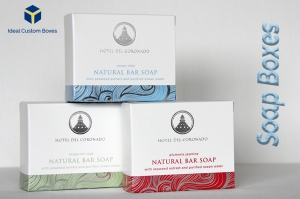please click here:
https://www.shdtimber.com/products.html
Introduction
Bilinga wood, often regarded as a premium tropical hardwood, is gaining recognition in the global timber and woodworking industries. Known for its durability, vibrant coloration, and versatility, Bilinga is a favorite among architects, furniture designers, and construction professionals. This guide explores Bilinga wood in depth, covering its properties, applications, maintenance, environmental considerations, and market trends.
Origin and Overview of Bilinga Wood
Bilinga wood, scientifically referred to as Nauclea diderrichii, is native to West and Central Africa. The wood is predominantly found in countries like Gabon, Cameroon, and the Democratic Republic of Congo. Its slow-growing nature contributes to its dense and resilient structure, making it ideal for heavy-duty applications.
Physical Properties
Bilinga wood is recognized for its striking appearance and structural strength. It typically exhibits a golden yellow to deep orange-brown hue, which darkens over time due to oxidation. The wood has a fine to medium texture and a natural luster, enhancing its aesthetic appeal.
Density and Hardness
Bilinga is a high-density hardwood, generally ranging between 800 and 1,050 kg/m3. Its hardness makes it suitable for flooring and decking, where durability is crucial. The wood's Janka hardness score ensures it can withstand daily wear and tear effectively.
Durability and Resistance
One of the most celebrated traits of Bilinga wood is its natural resistance to termites, fungi, and decay. This makes it a preferred material for outdoor construction, such as marine applications, bridges, and exterior cladding. Its durability rating is comparable to other renowned hardwoods like Teak and Iroko.
Workability
Despite its hardness, Bilinga wood responds well to both hand and machine tools. It can be planed, sanded, and polished to a smooth finish. Gluing, nailing, and screwing are generally effective, though pre-drilling is recommended to prevent splitting.
Comparison Table: Bilinga vs. Other Tropical Hardwoods
| Feature | Bilinga Wood | Teak Wood | Iroko Wood | Mahogany Wood |
|---|---|---|---|---|
| Density (kg/m3) | 800–1050 | 600–750 | 650–850 | 500–850 |
| Color | Yellow to Orange-Brown | Golden Brown | Yellow-Brown | Reddish-Brown |
| Durability | High | Very High | High | Medium-High |
| Resistance to Decay | Excellent | Excellent | Very Good | Good |
| Workability | Moderate | Easy | Moderate | Easy |
Applications of Bilinga Wood
Bilinga wood's versatility makes it suitable for a wide range of applications, both indoor and outdoor.
Outdoor Uses
Due to its decay resistance, Bilinga is frequently used for exterior decking, garden furniture, and marine construction. Its natural oils provide protection against weathering and moisture damage, reducing the need for chemical treatments.
Indoor Uses
Indoors, Bilinga wood is commonly used in flooring, cabinetry, and decorative veneers. Its appealing grain patterns and rich hues add warmth and elegance to interiors. Additionally, Bilinga is favored for staircases, paneling, and custom furniture pieces.
Specialty Uses
Architects and designers utilize Bilinga for high-end furniture, musical instruments, and artisanal woodcrafts. The wood's stability ensures minimal warping, making it suitable for precision applications such as joinery and carving.
Environmental Considerations
Sustainable sourcing is vital when working with tropical hardwoods like Bilinga. Efforts to certify logging practices through FSC or PEFC ensure that Bilinga is harvested responsibly. Using sustainably sourced Bilinga helps preserve tropical forests and promotes ethical trade.
Maintenance of Bilinga Wood
To maximize the lifespan of Bilinga wood, proper maintenance is necessary. Regular cleaning with a soft cloth and mild detergent prevents dirt accumulation. For outdoor uses, applying protective oils or sealants helps retain the wood's color and prevent moisture penetration. Sanding and refinishing may be required periodically to maintain surface quality.
Market Trends
Bilinga wood is increasingly sought after in Europe, North America, and Asia for its durability and aesthetic qualities. Export demand has led to improved supply chains, but the price can vary significantly depending on quality, grading, and certification. Comparing Bilinga with alternatives such as Teak and Iroko can help buyers make informed decisions based on budget and application needs.
Advantages and Limitations
Advantages:
-
High durability and decay resistance
-
Attractive color and natural luster
-
Versatile for both indoor and outdoor use
-
Strong, dense, and stable
-
Comparable to other premium tropical hardwoods
Limitations:
-
Higher density can make machining more labor-intensive
-
Sourcing sustainably may require careful vetting
-
Slightly more expensive than locally available hardwoods
How to Select Quality Bilinga Wood
When choosing Bilinga, consider the following:
-
Color uniformity: Even color without excessive discoloration
-
Grain pattern: Straight to interlocked for better workability
-
Moisture content: Ideally between 8–12% for indoor applications
-
Certification: FSC or PEFC labels for sustainable sourcing
-
Defects: Avoid wood with cracks, knots, or fungal spots
Bilinga Wood vs. Synthetic Alternatives
Bilinga wood offers natural beauty and resilience that synthetic materials struggle to replicate. Unlike composite decking or engineered wood, Bilinga does not contain plastics or binders, providing a more eco-friendly option. Additionally, its aging process enhances the wood's aesthetic, whereas synthetic alternatives may fade or deteriorate over time.
Future Prospects
With the rising awareness of sustainable construction and high-quality wood products, Bilinga's market potential remains strong. Innovations in finishing, preservation, and hybrid construction methods may further expand its applications. As designers seek exotic yet durable hardwoods, Bilinga's reputation as a premium material is likely to solidify.
Conclusion
Bilinga wood is a remarkable tropical hardwood offering a blend of beauty, strength, and durability. Its versatility spans indoor and outdoor uses, making it a favorite among woodworkers and architects. By prioritizing sustainable sourcing and proper maintenance, Bilinga can serve as a long-lasting and aesthetically pleasing material. With careful selection and informed use, it is a wood that meets the demands of both modern design and structural integrity.
Frequently Asked Questions
-
What is the typical lifespan of Bilinga wood?
Bilinga wood can last several decades, especially when properly maintained and protected from excessive moisture. -
Is Bilinga wood suitable for outdoor furniture?
Yes, Bilinga's resistance to decay and insects makes it an excellent choice for outdoor furniture, decking, and marine applications. -
How does Bilinga wood compare to Teak?
Bilinga is slightly denser and has comparable durability to Teak, though Teak may be easier to work with. Both woods excel in outdoor applications. -
Can Bilinga wood be used for flooring?
Absolutely. Its hardness and stability make it ideal for both residential and commercial flooring, providing durability and aesthetic appeal. -
How can I ensure that the Bilinga wood I purchase is sustainably sourced?
Look for FSC or PEFC certification and verify the supplier's sourcing practices to ensure the wood is harvested responsibly.
Article Summary
Bilinga wood, a dense and durable tropical hardwood from West and Central Africa, offers striking aesthetics and versatility for indoor and outdoor applications. Known for its decay resistance and stability, Bilinga is ideal for flooring, decking, and high-end furniture. Sustainable sourcing and proper maintenance enhance longevity, making it a reliable and premium choice for modern woodworking and construction projects.






